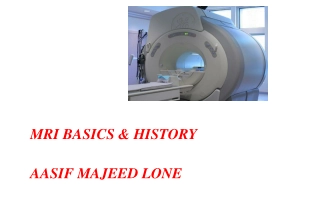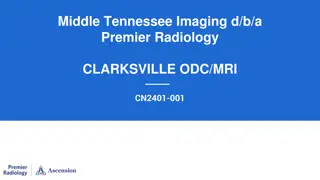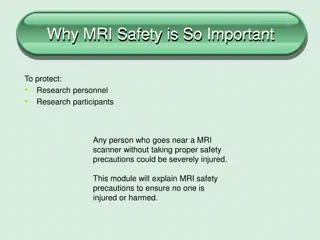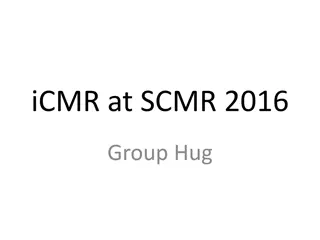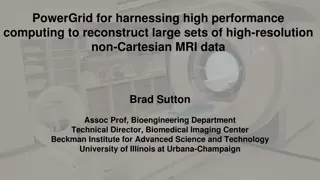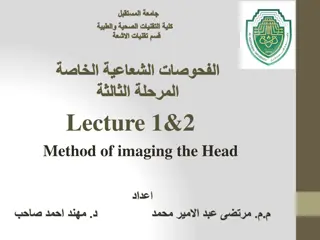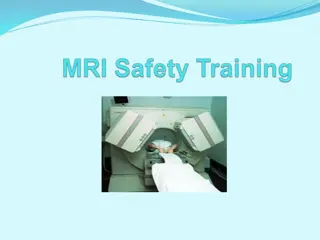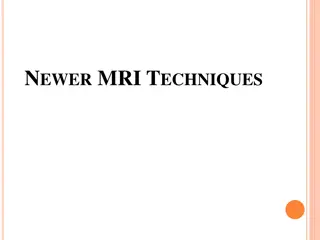Understanding MRI Artifacts: Causes and Examples
MRI artifacts are signal misrepresentations that can be caused by various factors such as patient movement, magnetic field inhomogeneity, metallic objects, and under-sampling. Motion artifacts, magnetic susceptibility artifacts, and aliasing/wrap-around artifacts are common types of artifacts that can impact the quality of MRI images.
Download Presentation

Please find below an Image/Link to download the presentation.
The content on the website is provided AS IS for your information and personal use only. It may not be sold, licensed, or shared on other websites without obtaining consent from the author. Download presentation by click this link. If you encounter any issues during the download, it is possible that the publisher has removed the file from their server.
E N D
Presentation Transcript
WHAT ARE ARTIFACTS? Artifacts are simply signal misrepresentations that do not correspond to the location of the specific tissue imaged.
WHAT CAUSES ARTIFACTS? The Patient/ Subject Magnetic Field Inhomogeneity Machine Hardware
MOTION ARTIFACT seen as a smearing across an image. Primarily caused from patient/subject voluntary movement Can be caused by involuntary movement such as: Oesophageal contraction/ vascular pulsation during head and neck imaging Respiration/ cardiac activity during T-spine/Abdominal imaging Bowel peristalsis during pelvic imaging
MAGNETIC SUSCEPTABILITY Artifacts resulting from the presence of metallic objects. Distorts nearby structures & causes signal loss
ALIASING/ WRAP AROUND ARTIFACT Occurs when tissue outside the field of view is under sampled, causing misregistration of anatomic location. Easily identified by the superimposition/incorrect location of anatomy




